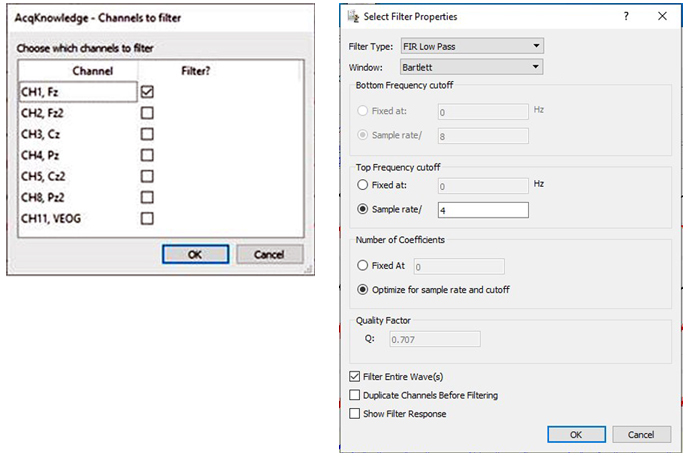Filter Multiple Channels at Once
Filter Multiple Channels at Once allows FIR, IIR, or Comb Band Stop filters to be selectively applied to a single EEG channel or to multiple EEG channels at the same time. Use AcqKnowledge Analysis > Electroencephalography > Filter Multiple Channels at Once to easily select multiple channels and apply filter parameters for concurrent processing. After selecting desired channels, click OK to open a new dialog to specify how channel data should be filtered.
Different frequency parameters and default Q settings are enabled in this dialog for each specific Filter Type as selected from the drop-down menu at the top of the dialog. The filtering options are like options detailed in Transform > Digital Filters, except they are only applied to the channels selected in the preceding dialog. Unlike in Transform > Digital Filters, if Comb Band Stop is selected from the Filter Type menu here, the software will not permit a range of frequencies; the default option is all up to Nyquist.
The final three checkboxes further define how processing should be applied:
Filter Entire Wave(s) is equivalent to checking the Transform Entire Wave checkbox used by Transform > Digital Filters.
Duplicate Channels Before Filtering will make a copy of the channel data being recorded and apply selected filter options to that copy to preserve the original input data and selected channels.
Show Filter Response is only available with certain filters and will open a new graph window to plot how the filter is attenuating energy as a function of frequency. This graph only tracks one copy of the filter response since the filter is applied to all channels of selected data.
This feature is available in AcqKnowledge 5.0.6 and above; Upgrade AcqKnowledge if needed.

Stay Connected